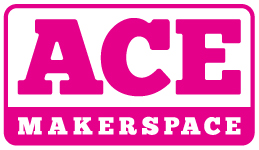Process & Design Choices
The videos listed below will each guide you through sewing an oven mitt step-by-step. Feel free to jump to one right away and keep it simple. This section offers a brief overview of the general process to help you understand some of the design choices available to you.
Each video tutorial follows the same general outline:
- Select fabrics for outside, batting, and lining of the mitt.
- Cut outer and lining fabrics to shape but rough-cut batting (one video leaves all cutting until after the quilting step).
- Make one or more “quilt sandwiches” by stacking outer/lining fabrics with batting in the desired order, then sewing over the whole area to secure the batting in place.
- Complete cutting the mitt shapes, probably by trimming away excess batting. If you’re wondering why we start with excess batting, try tracing the original mitt shape on the batting before quilting and see how much the outline moves.
- Sew right-sides together, trim seams and notch corner, and then flip inside-out.
- Add optional loop and finish any still-exposed seams.
You have choices such as:
- How many layers of batting do you want to use?
- Is all of the batting quilted to the outer fabric for a smooth lining (video A) or is another layer quilted to the lining (video B)?
- Video C quilts all of the layers together so there is no lining. The simplicity of this approach makes for an even quicker project but also leaves a raw/unfinished seam inside the mitt which might not hold up as well.
- How do you want to finish the opening of the mitt? Videos B & C use binding tape on the edge but Video A avoids it, concealing the raw edges with a fancy turning method.
- The most fun choice: what fabric! This project is small enough you might be able to use scraps or buy fat quarters in fun prints. You could even make patchwork out of smaller scraps. Remember to stick to natural fibers or do a melt test.
Materials & Tools
Materials
- Outer fabric – two pieces 9”x13”
- Lining fabric – two pieces 9”x13”
- Batting* – two or more pieces 10”x14”
- Thread (to match)
- Binding tape (optional)
Tools
- Standard sewing machine
- Shears
- Rotary cutter and cutting mat (optional)
- Pinking shears (optional, only mentioned in video A)
- Ruler or other straight edge (unless random quilting)
- Sewing clips or pins
*Batting
An oven mitt gets most of its thickness (and, thus, heat protection) from batting. You may want to include two types of batting:
- Insul-Bright is a polyester batting with a metal foil layer. The batting is a buffer against heat conduction and the foil reflects radiant heat. The packaging might even include an oven mitt pattern.
- Simple cotton batting will also resist heat conduction–your basic ikea oven mitt probably doesn’t have a foil layer in it. Cotton batting will never melt in your oven mitt. Some synthetic or blended battings might be okay but be careful to check their melt temperatures.
Video Guides
Video A: TheCraftyGemini
Highlights:
- Random quilting pattern
- No binding tape needed
- Demonstrates a common lining technique which requires turning the nearly-finished mitt inside-out through a small opening, see accessibility considerations or the other options below if that sounds difficult for your hands
Video B: Today we Craft
Highlights:
- Shows how to use binding tape
- Two layers of batting are used, quilted separately to outer and lining fabrics
- Only the outer-mitt-assembly needs to be turned inside-out
Video C: Professor Pincushion
Highlights:
- Makes one, giant quilt sandwich that goes outer-batting-batting-lining and then cuts out the two sides of the mitt
- Sews the mitt pieces right-sides together so that one turn inside-out is required. This hides the raw edges of the seam inside the mitt.
Accessibility Considerations
General sewing tasks such as cutting, pinning, and using the sewing machine call for some degree of mobility, dexterity, and eyesight but there are lots of ways to adapt, e.g.
- For cutting pattern pieces using the acrylic template your options include:
- Use the template as a guide for a rotary cutter, which requires a bit of downward force on a flat surface (protected by a cutting mat) but can be done entirely by feel
- Trace the template with tailor’s chalk or another marking tool and then cut the fabric with shears
- All of the methods shown involve turning the mitt inside-out at one point or another. This requires a bit of hand strength to finagle the thick, quilted material but you could also:
- Use a tool such as the handle of a broom to help turn the material (unlikely to work for the method in video A above)
- Adapt the construction to avoid turning. You could sew two quilted panels together in the correct, finished orientation and then use binding tape all the way around the edge to finish the seam. This would be a strength/dexterity trade-off because binding tape can be its own, fiddly challenge.
- Small, fiddly tasks such as needle threading often have associated tools like a needle threader. Don’t be afraid to search or ask for advice!
Feel free to chime in on slack with other considerations or adaptations you’ve thought of, or to ask for help.
